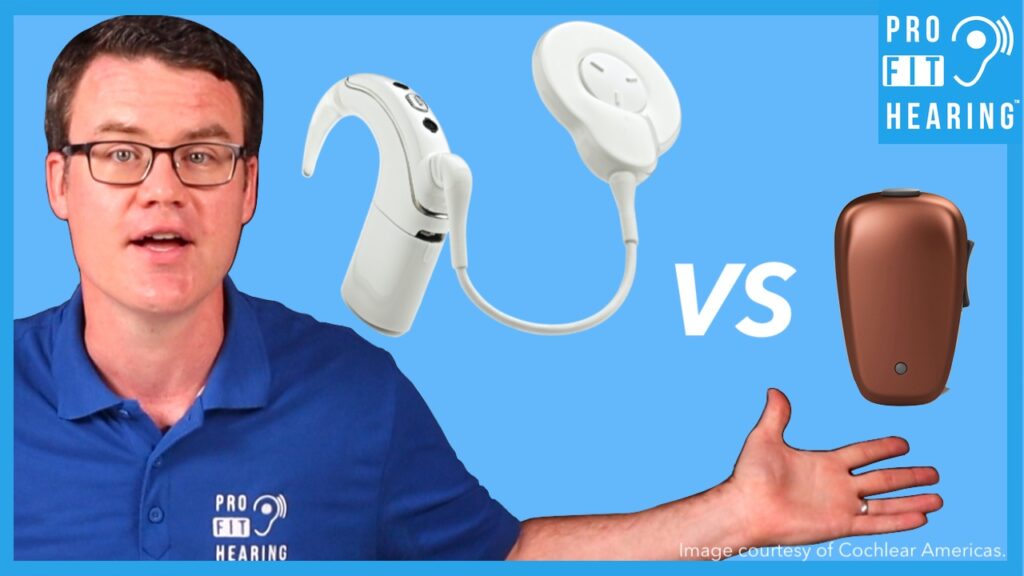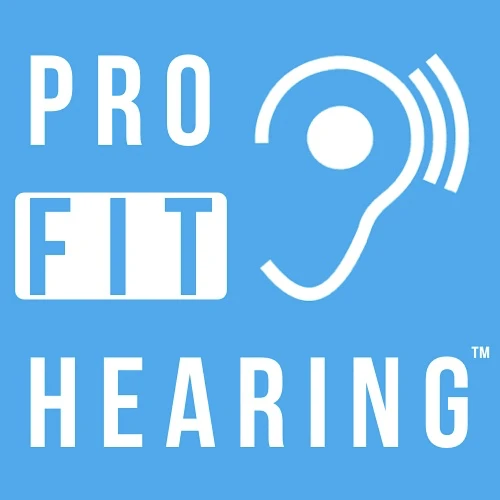Cochlear Implant vs BAHA (Bone Anchored Hearing Aid)

Cochlear Implant vs BAHA (Bone Anchored Hearing Aid)
Cochlear implant vs BAHA (bone anchored hearing aid) – what’s the difference, and how can these devices help you hear your best? In this post, I’ll discuss these two types of hearing device technology.
SUBSCRIBE to our YouTube channel for weekly videos!
Hi, I’m Dr. Derek – audiologist, audio engineer, and musician with ProFitHearing.com bringing you the best insight in today’s latest hearing aids, headphones, and audio technology to improve your life. If you have concerns about your hearing, always consult with your local physician or audiologist.
If you’re interested in hearing aids, check out my free eBook HERE.
Cochlear Implant vs BAHA
When we have hearing loss, we experience reduced hearing sensitivity for different frequency bands. So for example, a high frequency hearing loss impacts our ability to hear the consonants in speech. This reduces the speech clarity and it makes it harder to understand what someone’s saying especially in noisy situations.
Cochlear Implant
One type of hearing device technology is a cochlear implant. It’s used to treat sensorineural hearing loss which is caused by damage to the inner ear hair cells and/or the auditory nerve. A cochlear implant is surgically inserted under the skin near the ear, and an electrode array is inserted into the inner ear or cochlea. This electrode array electrically stimulates the auditory nerve which overrides our natural hearing mechanism. In addition to the surgically inserted electrode, a sound processor device is placed behind the ear or on the head. This sound processor connects to the implanted electrode via a coil of wire and a magnet.
The sound processor uses microphones to pick up all the sounds in your environment. This sound is processed and transformed into electrical impulses which stimulate different areas of the inner ear or cochlea so that we can perceive sounds across different frequencies. Over time the sound levels are adjusted as you acclimate and can tolerate louder sounds. Your brain needs time to adjust to this sound input, so you’ll need to re-learn how to hear and understand speech this way.
BAHA
A second type of hearing device technology is the bone anchored hearing aid or BAHA. A BAHA transmits sound with bone conduction while a cochlear implant stimulates the auditory nerve directly. The microphones on a BAHA pick up the sounds around you, process the sound, and then amplify the sound to accommodate for hearing loss. This amplified sound is then transferred to the inner ear through the skull as the BAHA vibrates against the head.
A bone anchored hearing aid can be held into place behind the affected ear with a softband which is common with children, or it can be surgically implanted into the skull. One possible surgical solution uses an abutment or metal post inserted into the skull. The BAHA device is then attached to the post. Another solution uses an implant under the skin. A sound processor device is placed behind the ear or on the head. This sound processor connects to the implanted electrode via a coil of wire and a magnet.
Now, why would you use a cochlear implant over a BAHA and vice versa? Your audiologist or Ear, Nose, and Throat physician (ENT) can review your case history and test results. This will help determine what the best solution is for you.
Cochlear Implant vs BAHA – Your Thoughts?
Let me know what questions you have about cochlear implants and BAHAs in the comments below. If you’re interested in learning more about today’s latest hearing aid technology, go to https://www.youtube.com/profithearing and check out all the videos on our YouTube channel.
-Dr. Derek
Follow Pro Fit Hearing on social media
Share this post
